Mooney planes are a line of high-performance single-engine aircraft known for their speed and efficiency. These planes feature advanced avionics, aerodynamic design, and reliable engines. Buyers contemplate factors like model year, engine type, flight hours, and maintenance history. Mooney planes are equipped with modern navigation systems and safety features. Buy a Mooney plane to experience precision engineering and exceptional performance.
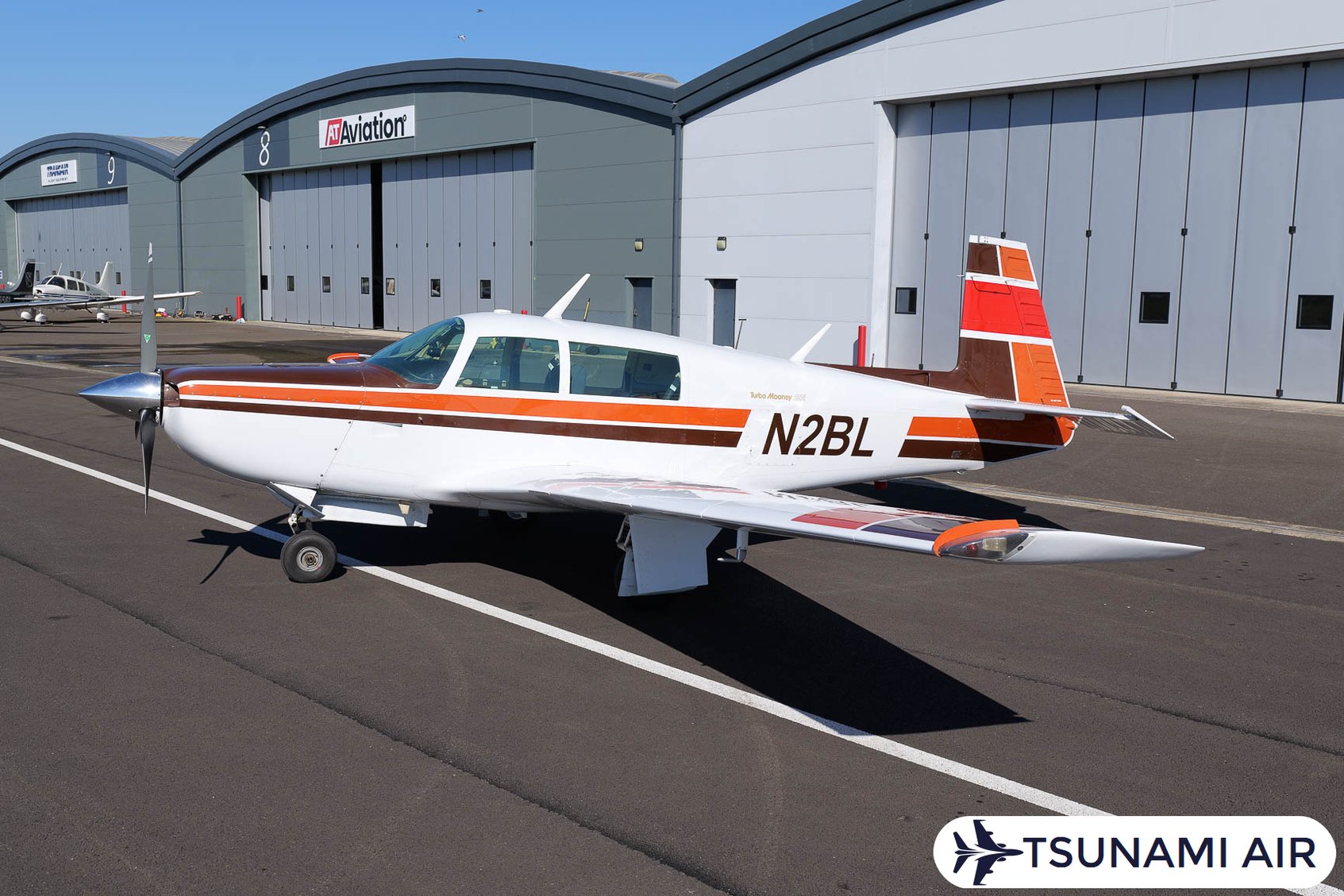
USD $90,000.00
Single EngineReg Number
N2BL
Total Time
1500 hrs
Location
United Kingdom
Year
1979
Seller: AT Aviation
Phone: +441404642006
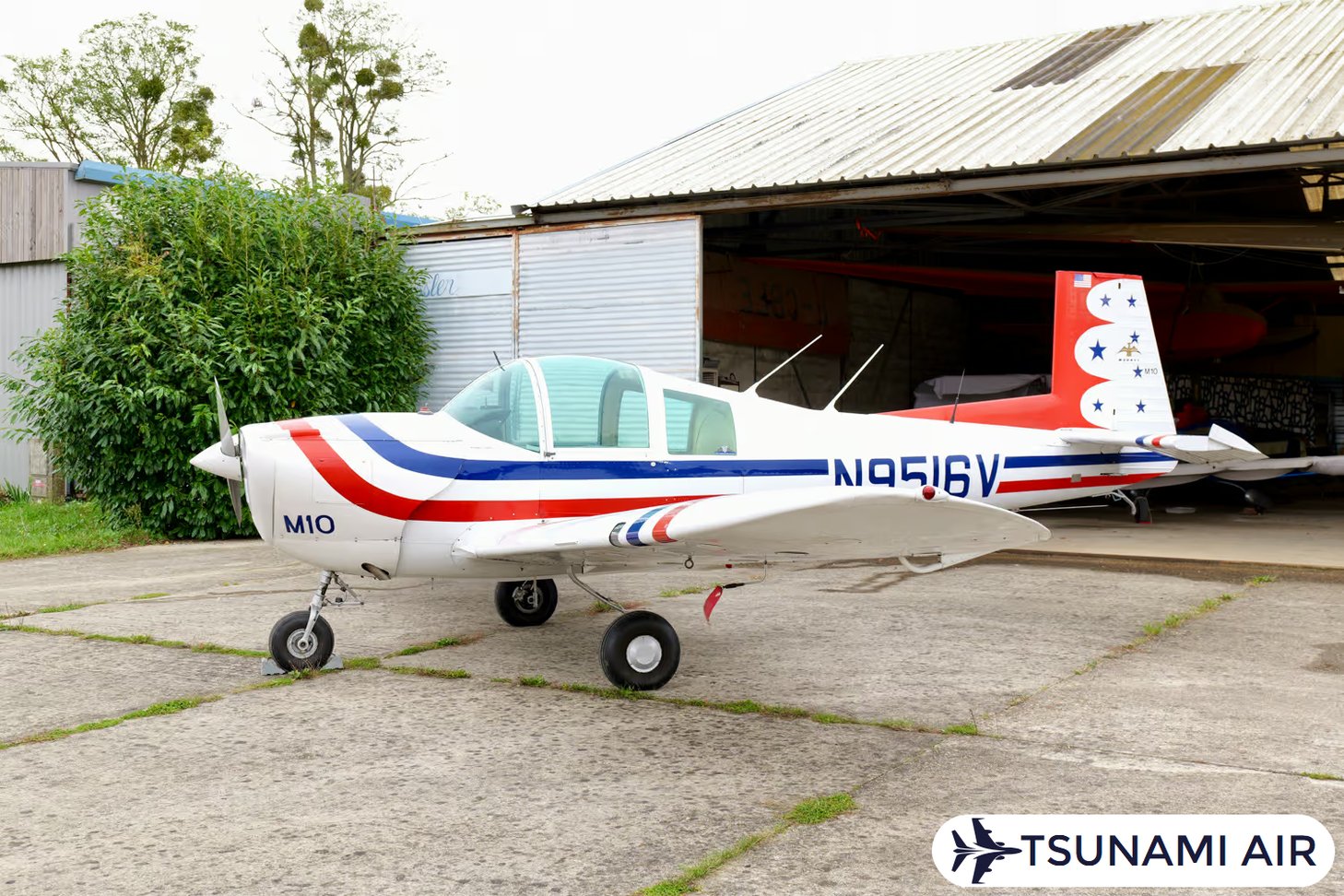
USD $23,000.00
Single EngineReg Number
N9516V
Total Time
1890 hrs
Location
United Kingdom
Year
1969
Seller: AT Aviation
Phone: +441404642006

USD $230,000
Single EngineReg Number
-
Total Time
2050 hrs
Location
South Africa
Year
1990
Seller: Rochelle Govender
Phone: +27 (0)11 548 3000
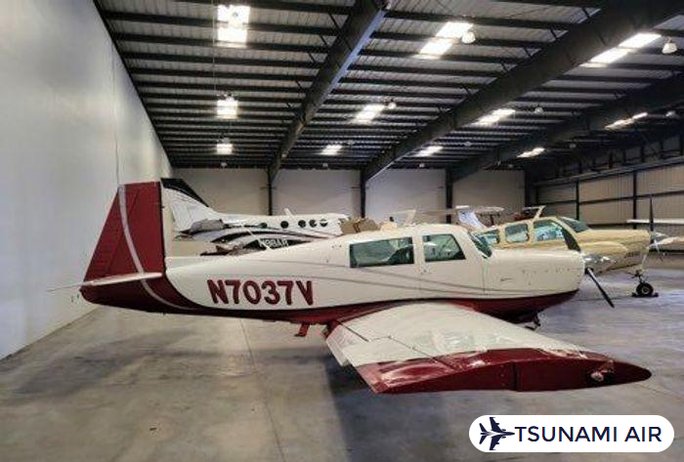
USD $Call for Price
Single EngineReg Number
N6370Q
Total Time
2017 hrs
Location
United States
Year
1967
Seller: N/A
Phone: (815) 479-0402
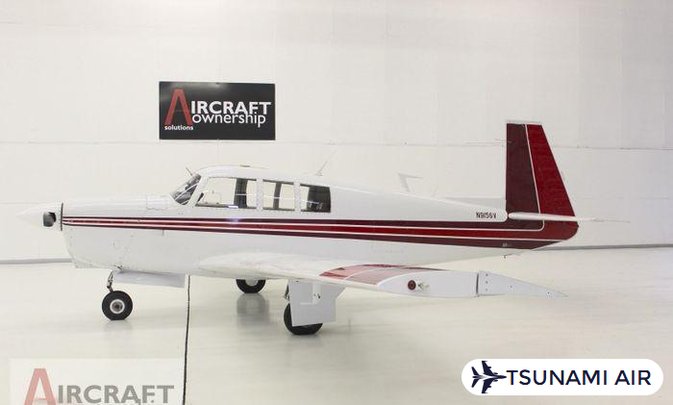
USD $84,000
Single EngineReg Number
N6944N
Total Time
4879 hrs
Location
United States
Year
1968
Seller: Infinity Aviation, LLC.
Phone: (605) 381-9604
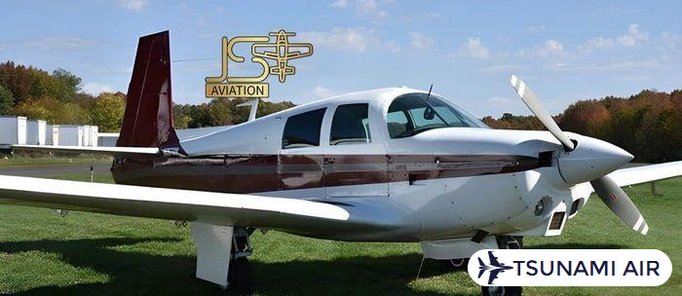
USD $79,500
Single EngineReg Number
N3971N
Total Time
3401 hrs
Location
United States
Year
1968
Seller: N/A
Phone: (425) 478-7163

USD $84,900
Single EngineReg Number
N2672W
Total Time
4780 hrs
Location
United States
Year
1966
Seller: N/A
Phone: (440) 732-8959

USD $199,900
Single EngineReg Number
N1088S
Total Time
2602 hrs
Location
United States
Year
1989
Seller: N/A
Phone: (423) 667-5489
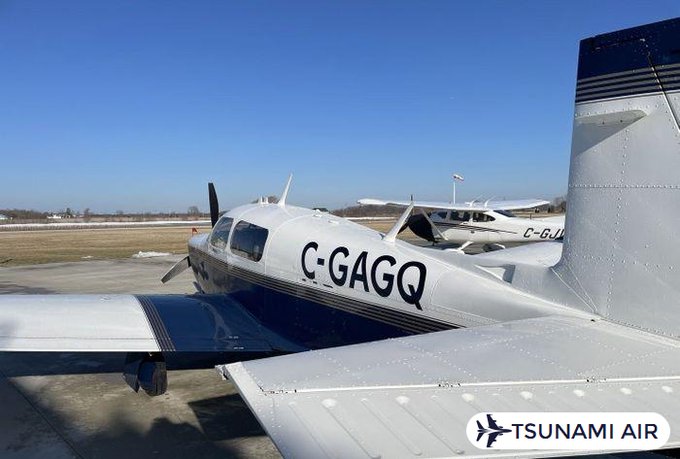
USD $196,000
Single EngineReg Number
C-GAGQ
Total Time
650 hrs
Location
Canada
Year
1995
Seller: Paul Nesseth
Phone: (519) 948-1739
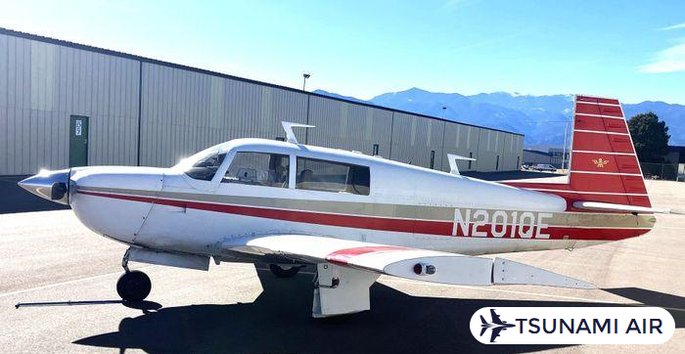
USD $Call for Price
Single EngineReg Number
N201MD
Total Time
6493 hrs
Location
United States
Year
1977
Seller: N/A
Phone: (425) 478-7163
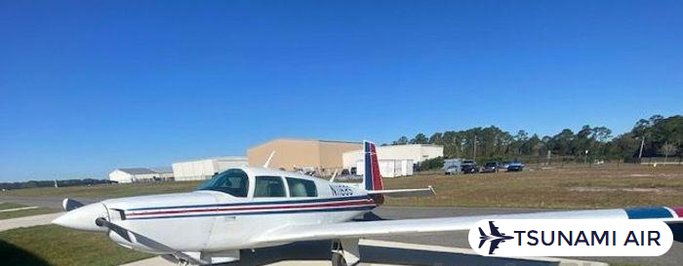
USD $Call for Price
Single EngineReg Number
N1168S
Total Time
2536 hrs
Location
United States
Year
1982
Seller: N/A
Phone: (866) 232-4929
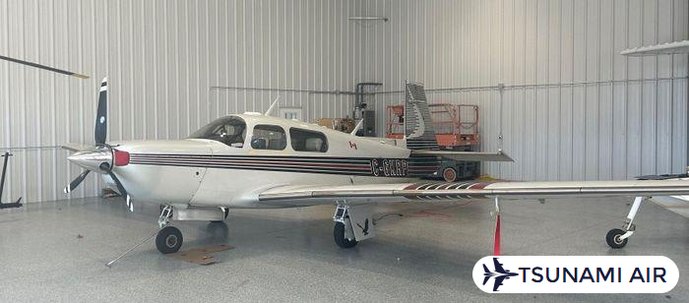
USD $189,000
Single EngineReg Number
Not Listed
Total Time
4414 hrs
Location
USA
Year
1986
Seller: N/A
Phone: (613) 632-0123
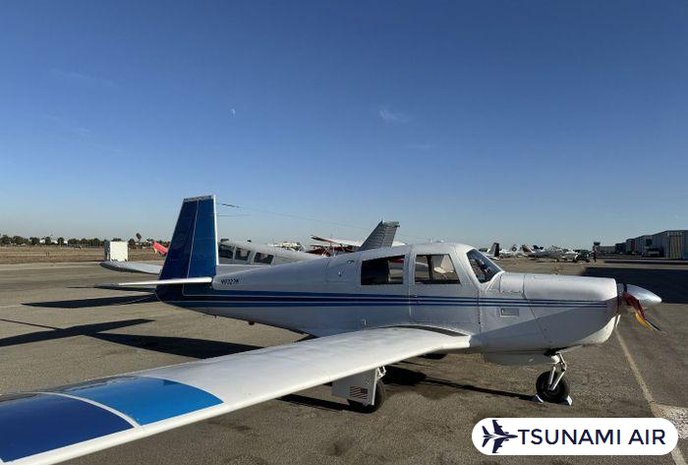
USD $62,500
Single EngineReg Number
9327M
Total Time
4684 hrs
Location
United States
Year
1966
Seller: Chuck Smith Aircraft Inc
Phone: (310) 418-4148 Cell

USD $125,000
Single EngineReg Number
201QE
Total Time
8177 hrs
Location
United States
Year
1977
Seller: David Miller
Phone: (719) 650-8667

USD $81,500
Single EngineReg Number
N7037V
Total Time
2748 hrs
Location
United States
Year
1976
Seller: N/A
Phone: (423) 667-5489

USD $89,900
Single EngineReg Number
N9156V
Total Time
2854 hrs
Location
United States
Year
1969
Seller: N/A
Phone: (765) 456-1772
The Mooney aircraft brand is an American aircraft manufacturer based in Kerrville, Texas, United States. Mooney International Corporation manufactures general aviation aircraft, including single-engined piston-powered planes, and is known for advanced features and efficient designs.
The heritage of Mooney International Corporation traces back to its founding in 1929 by Albert and Arthur Mooney in Wichita, Kansas. The company established a strong legacy in aircraft manufacturer engineering, marked by continuous innovation and advanced design. Over the decades, the Mooney brand survived bankruptcies and ownership changes, including periods of French and Chinese ownership. In 2013, a group of Mooney owners took majority ownership to revive the brand after financial setbacks. Mooney International Corporation remains headquartered in Kerrville, Texas, since 1953 and has delivered over 11,000 aircraft worldwide. The company’s focus on general and private aviation solidified its position as a leader in producing high-performance single-engine piston-powered planes.
The Mooney M20 aircraft model stands out for its aerodynamic efficiency and performance capabilities. Known for its low-wing design and retractable landing gear, the M20 series features a distinctive vertical stabilizer with a reversed leading edge, boosting stability and reducing drag. The M20J 201 achieved a milestone by reaching 201 mph (323.47 km/h) with 200 horsepower (149.14 kilowatts), showcasing Mooney M20 aerodynamics. The M20TN Acclaim Type S holds the title of the fastest civilian single-engine piston aircraft, capable of speeds exceeding 201 mph (323.46 km/h). These attributes make the Mooney M20 performance a benchmark in general aviation recreational flying and private aviation sectors.
Mooney International Corporation emphasizes design and engineering excellence in aircraft manufacturer production. Advanced techniques like CNC machining combine with traditional methods to guarantee precision and reliability. The company prioritizes fuel efficiency, speed, and pilot-friendly features in its small aircraft. The Mooney design philosophy integrates functionality with cutting-edge aesthetics, appealing to both recreational pilots and flight schools. The Model L and Model N targeted training markets, further establishing Mooney’s reputation in general aviation small aircraft. Continuous improvements to the M20 line reflect Mooney International Corporation innovation and commitment to engineering advancements.
Key attributes of Mooney aircraft include speed, efficiency, and reliability, positioning the brand as a leader in small aircraft manufacturing. Mooney airplanes cater to private pilots seeking high-performing planes for personal use and recreational enthusiasts valuing advanced aerodynamics. The Mooney M20 aircraft model combines superior handling characteristics with operational cost efficiency, making it a preferred choice in the general aviation sector. The company’s heritage underscores its ability to adapt and innovate, guaranteeing the Mooney brand remains synonymous with excellence in aircraft manufacturer design and performance.
The types of planes Mooney manufactures include the Mooney M-18 Mite, the Mooney M20 Series, the M20G Statesman, the Super 21, and the M10 Cadet.
The types of planes that Mooney manufactures are listed below.
Mooney Aircraft Corporation focuses on general aviation and training aircraft. Mooney aircraft serve both recreational pilots and expert flight operations. The M20 series exemplifies Mooney’s dedication to mooney aircraft corporation general aviation with its Mooney M20 series low-wing configuration and single-engine piston design. The M20 series features a four-seat design, appealing to private pilots and small charter operators. Notable variants include the M20G Statesman and the Super 21, which enhance speed and efficiency for personal and business use.
The M10 Cadet represents an entry-level aircraft specialized for pilot training programs. Flight schools favor the Mooney M10 cadet training aircraft due to its straightforward handling and reliability. The M10 Cadet aligns with Mooney’s commitment to entry-level design by offering an affordable and efficient platform for new aviators. Its smaller size and simplified systems make it ideal for foundational flight instruction.
Legacy models like the Mooney M-18 Mite highlight the company's historical contributions to aviation innovation. The M-18 Mite established Mooney’s reputation for producing lightweight, efficient aircraft during the 1940s and 1950s. These early designs laid the groundwork for advancements in mooney aircraft corporation airplane manufacturing. The M22 Mustang demonstrates Mooney’s engineering prowess as the first FAA-certified pressurized single-engine aircraft, powered by a 310-horsepower Lycoming TIO-541-A1A engine.
The features of the Mooney aircraft include a sleek design, low-wing configuration, flush-riveted wings, and a laminar flow design. The fuselage offers varying lengths, while the cockpit focuses on pilot control. Many models have retractable gear, reducing drag, and the stabilizer design enhances control without trim tabs.
The features of the Mooney aircraft are outlined below.
The performance of Mooney aircraft highlights aerodynamic efficiency, stability, and lift. A low wing configuration reduces drag, contributing to mooney aircraft efficiency. Laminar flow wings enhance aerodynamic lift while optimizing the lift-to-drag ratio. Wing design geometry includes carry-through wing spars that refine structural integrity and rigidity. Engine system fuel efficiency minimizes drag, aiding long-range capabilities and reliable cross-country flying.
Reliability defines the Mooney M20 series lineage, with engines providing consistent performance. The 180-hp Lycoming O-360-A1D powers the Mooney M20C, while the 310-hp Continental IO-550-G equips the Mooney M20U Ovation Ultra. Turbocharged engines in high-performance variants like the Acclaim Ultra deliver increased engine system power. Continuous innovation characterizes the Mooney M20 series, driving advancements in wing design efficiency and cockpit safety features. Progressive enhancements maintain Mooney M20 series innovation, meeting evolving aviation demands.
The structure of Mooney aircraft emphasizes durability and integrity. Aircraft structure materials include 4130 Chromoly steel tubing for the cabin frame and aluminum skin for the fuselage. Semi-monocoque design in the aft fuselage enhances structural strength. Flush-mounted rivets reduce aerodynamic drag, aligning with aerodynamics efficiency. The forward-swept vertical stabilizer ensures aerodynamic stability. Sturdy materials guarantee aircraft structure durability, providing stable flight characteristics in varying conditions.
Powerful engines and advanced avionics define modern Mooney aircraft. Engine options cater to different performance needs, offering engine system horsepower variations from 180 to 310 hp. Avionics suite navigation includes GPS systems for better situational awareness. Reliable communication radios and comprehensive instrumentation enhance operational safety. Cabin interior layout accommodates three to four occupants, prioritizing ergonomic seating and visibility. Compact interiors balance aircraft performance with cabin interior comfort, appealing to pilots seeking efficient single-engine planes.
The specifications of the Mooney aircraft include crew, length, wingspan, height, empty weight, gross weight, max takeoff weight, powerplant, engine, propeller, and performance. Mooney M20C features a Lycoming O-360-A1D engine with 180 hp, while Mooney M20U Ovation Ultra uses a Continental IO-550-G engine with 310 hp. Both models emphasize efficiency in weight lb kg loading and performance.
The specs of the Mooney aircraft are given in the table below.
Specification | Mooney M20C | Mooney M20J | Mooney M20 Acclaim Ultra |
Crew | 1 | 1 | 1 |
Length | 23 ft 2 in (7.06 m) | 25 ft 4 in (7.72 m) | 26 ft 8 in (8.13 m) |
Wingspan | 35 ft (10.67 m) | 36 ft 1 in (10.99 m) | 36 ft 6 in (11.12 m) |
Height | 8 ft 4 in (2.54 m) | 8 ft 4 in (2.54 m) | 8 ft 4 in (2.54 m) |
Empty Weight | 1,526 lbs (692 kg) | 1,843 lbs (836 kg) | 2,380 lbs (1,080 kg) |
Gross Weight | 2,575 lbs (1,168 kg) | 2,740 lbs (1,243 kg) | 3,368 lbs (1,528 kg) |
Max Takeoff Weight | 2,575 lbs (1,168 kg) | 2,740 lbs (1,243 kg) | 3,368 lbs (1,528 kg) |
Powerplant | Lycoming O-360-A1D | Lycoming IO-540-A1A5 | Continental TSIO-550-G |
Engine Type | 4-cylinder, air-cooled | 6-cylinder, air-cooled | 6-cylinder, turbocharged |
Engine Horsepower | 180 hp | 200 hp | 310 hp |
Propeller Type | 2-blade Hartzell constant-speed | 2-blade Hartzell constant-speed | 3-blade Hartzell Scimitar constant-speed |
Propeller Diameter | 76 in (193 cm) | 76 in (193 cm) | 74 in (188 cm) |
Service Ceiling | 17,200 ft (5,242 m) | 18,800 ft (5,730 m) | 25,000 ft (7,620 m) |
Maximum Speed | 155 knots (287 km/h) | 170 knots (315 km/h) | 242 knots (448 km/h) |
Range | 659 NM | 846 NM | 1,125 NM |
Fuel Capacity | 52 gal (197 L) | 64 gal (242 L) | 102 gal (386 L) |
Fuel Consumption (75%) | 8.5 gal/hr (32.2 L/hr) | 10 gal/hr (37.9 L/hr) | 16 gal/hr (60.6 L/hr) |
Landing Gear | Retractable tricycle | Retractable tricycle | Retractable tricycle |
Airframe Material | Aluminum | Aluminum | Aluminum |
Construction | Monocoque fuselage, semi-monocoque wings | Monocoque fuselage, semi-monocoque wings | Monocoque fuselage, semi-monocoque wings |
The Mooney M20C achieves a service ceiling of 17,200 feet (5,242 meters) while the Mooney M20J reaches 18,800 feet (5,730 meters). The Mooney M20 Acclaim Ultra excels with a service ceiling of 25,000 feet (7620 meters) and a maximum speed of 242 knots (448 kilometers per hour). Aircraft fuel consumption varies, with the Mooney M20C consuming 8.5 gallons (32.17 liters) per hour at 75% power. Mooney aircraft dimensions differ across models, with lengths spanning 23 ft 2 in (7.06 m) for the M20C to 26 ft 8 in (8.13 m) for the Acclaim Ultra. Wingspans measure between 35 ft (10.67 m) and 36 ft 6 in (11.12 m), while height remains consistent at 8 ft 4 in (2.54 m).
The Mooney aircraft weight specifications reveal an empty weight of 1,526 lbs (692 kg) for the M20C and 2,380 lbs (1,080 kg) for the Acclaim Ultra. Gross weights range from 2,575 lbs (1,168 kg) for the M20C to 3,368 lbs (1,528 kg) for the Acclaim Ultra. Aircraft model series like the M20C and M20J utilize Lycoming engines, whereas higher-performance variants like the Acclaim Ultra use Continental TSIO-550-G engines. Engine horsepower ranges from 180 hp in early models to 310 hp in turbocharged variants. Engine displacement measures 360 cubic inches in Lycoming O-360-A1D engines. Fuel system capacity spans 52 (197 liters) to over 100 (378 liters) gallons depending on the model.
The Mooney M20C features a 2-blade Hartzell constant-speed propeller with a diameter of 76 inches (193.04 centimeters). Higher-end models like the Acclaim Ultra incorporate 3-bladed Hartzell Scimitar propellers. Avionics systems in modern Mooney aircraft integrate GPS navigation, digital communication systems, and advanced autopilot capabilities. Landing gear configuration includes retractable tricycle setups designed to reduce drag and boost aerodynamics. Landing gear materials consist of durable metal alloys suited for general aviation operations.
Fuel system capacity supports extended flight durations, with the Mooney M20J holding 64 gallons (242 liters) and the M20C accommodating 52 gallons (197 liters). Fuel type compatibility is limited to aviation gasoline (Avgas). Airframe material consists of aluminum, contributing to lightweight yet robust construction. Airframe dimensions emphasize compact fuselage cross-sectional areas to enhance speed and efficiency. Airframe construction techniques include monocoque fuselage designs paired with semi-monocoque wing structures, providing structural integrity and durability across all Mooney aircraft models.
The performance of Mooney planes is noteworthy, achieving speeds between 140-217 knots depending on the model and engine, like the Lycoming 180-hp or higher-performance variants. Mooney planes demonstrate efficiency through low fuel consumption, contributing to long endurance and range for cross-country flying.
The performance of Mooney planes is given in the table below.
Model | Max Speed | Cruise Speed | Rate of Climb | Range (NM) | Service Ceiling (ft) | Fuel Consumption (gph) |
Mooney M20M | 217 knots | 190 knots | 1,230 ft/min (374.904 m/min) | 850 NM | 25,000 ft (7620 meters) | 16 gph |
Mooney M20J | 170 knots | 140 knots | 1,030 ft/min (313.944 m/min) | 690 NM | 18,000 ft (5,486.4 m) | 9.25 gph |
Mooney M20C | 147 knots | 140 knots | 800 ft/min (243.84 m/min) | 500 NM | 16,000 ft (4,876.8 m) | 9 gph |
Mooney Acclaim Ultra | 242 knots TAS | 213 knots | 1,400 ft/min (426.72 m/min) | 1,000 NM | 25,000 ft (7620 meters) | 17 gph |
Mooney M20J | - | - | - | Ground Roll: 880 ft (268 m) | Obstacle Clearance: 1550 ft (472.44 m) | - |
The Mooney planes’ speed ranges from 140 to 217 knots depending on the model, with the Mooney M20M achieving a maximum cruise speed of 217 knots. Rate of climb varies, with the M20M recording 1,230 feet (374.9 meters) per minute and the M20J reaching 1,030 feet (313.9 meters) per minute. The Mooney M20J achieves 690 nautical miles (1278 kilometers) with a fuel capacity of 64 gallons (242 liters). The Mooney M20 series service ceiling supports operations up to 18,000 feet (5,486 meters) or higher, boosting versatility for high-altitude cruising. Mooney aircraft combine these factors with efficient aerodynamics, enabling short-field takeoff and landing distances. The M20J requires 880 feet (268 meters) for takeoff ground roll and clears a 50-foot (15 meters) obstacle in 1,550 feet (473 meters).
The Mooney M20 series cruise speed spans 140 to 217 knots, accommodating diverse mission requirements. Early variants like the M20C achieve speeds around 140 to 147 knots at 75% power, while advanced models like the Acclaim utilize turbocharged engines to reach higher speeds. Mooney aircraft corporation engineering emphasizes reducing drag through streamlined fuselage designs, contributing to superior aircraft performance fuel consumption. The M20C burns 35 liters (9.25 gallons) of fuel per hour at 75% power, providing an endurance of up to five hours (8.33 kilometers). Modifications and production year upgrades further enhance performance capabilities, making newer models more efficient and faster.
Comparing Mooney planes to competitors highlights their strengths in speed, efficiency, and operational costs. The Mooney planes’ fuel efficiency distinguishes them from other piston singles, achieving long endurance and range for cross-country missions. Aircraft performance, max speed and fuel economy make Mooney planes ideal for business travel, while their handling characteristics suit recreational flying. Maintenance costs are higher compared to some competitors, but the reliability and long-term cost efficiency of Mooney aircraft justify the investment. Pilots seeking mooney plane models prioritize performance-oriented designs that balance speed, range, and economy effectively.
Operational considerations for Mooney aircraft include maintenance requirements and reliability factors. Mooney aircraft corporation innovation ensures robust climb rates and responsive flight dynamics, but tradeoffs exist in terms of ride quality and precise landing techniques. The Mooney M20 series takeoff distance and landing performance are optimized for smaller airfields, reflecting the brand’s focus on accessibility. Regular inspections and adherence to maintenance schedules contribute to sustained performance and safety. Mooney aircraft remain a popular choice for pilots valuing high-speed, long-range capabilities within the single-engine piston category.
The different Mooney plane models include the M18 Mite, M20 series, M22 Mustang, and Ercoupe. The M20 series offers various configurations with retractable landing gear. The M18 Mite features fixed landing gear. The Ercoupe represents a different design philosophy with tricycle landing gear.
The different Mooney plane models are given in the table below.
Model | Key Features | Engine Type/Power | Performance Specifications | Notes |
Mooney M18 Mite | Lightweight, Fixed LG | Not Specified | Empty Weight: 725 lbs (330 kg) | Sport and training focus |
Mooney M20J | Retractable LG, Cabin Width: 43.5 in (110.5 cm) | Lycoming IO-360 200 HP (149 kW) | Max Takeoff Weight: 2,740 lbs (1,243 kg), Speed: 175 knots (201 mph) | Seats 1 pilot + 3 pass, Range: 1,125 NM, Service Ceiling: 18,800 ft (5,730 m) |
Mooney M20K | Fully Enclosed LG, Reduced Drag | Turbocharged/Normally Aspirated Lycoming Engines | Service Ceiling: Higher than M20J | Aerodynamic improvements |
Mooney M20M | Turbocharged Variant | Lycoming TSIO-540 270 HP (201 kW) | Service Ceiling: >23,000ft (7010 m) | Superior climb rates |
Mooney M20R | High-Performance | Continental IO-550-G | Engine Power: 280 HP | Faster travel times |
Mooney M22 Mustang | Low-Wing Design, Stability & Agility | Not Specified | Enhanced Stability and Agility | Reflects innovation |
Ercoupe | Tricycle Landing Gear | Not Specified | Ease of Handling | Unique design philosophy |
The Mooney M20 series represents a core line of single-engine piston aircraft known for performance and efficiency. The Mooney M20J model designation identifies a variant featuring a cabin configuration designed to seat one pilot and three passengers. The Mooney M20J cabin configuration includes a cabin width of 43.5 inches (110.5 centimeters), offering a comfortable setting compared to competitors like the Beech Bonanza. Mooney M20J performance specifications include a maximum takeoff weight of 2,740 lbs (1,243 kg), an empty weight around 1,640 lbs (744 kg), and a Lycoming IO-360 engine producing 200 HP (149 kW). The Mooney M20J achieves a maximum range of about 1,125 nautical miles (2,083 kilometers), a service ceiling of 18,800 feet (5,730 meters), and a maximum speed of 175 knots (201 miles per hour).
The Mooney M20K model designation refers to a variant with aerodynamic design improvements, including fully enclosed retractable landing gear for reduced drag. Mooney M20K engine type incorporates turbocharged or normally aspirated Lycoming engines optimized for high-altitude performance. The Mooney M20M model designation identifies a turbocharged variant within the M20 series. Mooney M20M turbocharged capability allows efficient operation at higher altitudes, achieving superior climb rates and cruise speeds. Mooney M20M performance specifications include a service ceiling exceeding 23,000 feet (7010 meters) and a Lycoming TSIO-540 engine delivering 270 HP (201 kilowatts). The Mooney M20R model designation highlights the high-performance segment of the M20 family. High performance is achieved through a Continental IO-550-G engine providing 280 HP, enabling faster travel times and advanced capabilities.
The Mooney Mite model designation identifies an earlier lightweight aircraft distinct from the M20 series. Mooney Mite lightweight configuration emphasizes simplicity and sport flying dynamics, with a focus on aerobatic and training purposes. Mooney Mite sport orientation includes a lightweight airframe weighing 725 lbs (330 kg), designed for single-pilot operation and maneuverability. Additional models like the M22 Mustang and Ercoupe represent unique design philosophies within the Mooney lineup. The M22 Mustang features a low-wing design boosting stability and agility, while the Ercoupe incorporates tricycle landing gear for ease of handling during takeoff and landing.
The difference between a turbocharged Mooney plane and a standard Mooney is explained in the table below.
Feature | Turbocharged Mooney Plane | Standard Mooney Plane |
Engine Configuration | Turbocharged engine with intercooler | Naturally aspirated engine |
Maximum Operating Altitude | M20K 231: 24,000 ft (7,315.2 m)/M20K 252: 28,000 ft (8,534.4 m) | Limited to ~12,000 ft (3,657.6 m) |
Cruise Speed | Higher cruise speeds at optimal altitudes | Lower cruise speeds compared to turbocharged models |
Example: Acclaim S comparable to turboprops (~280 hp piston) | ||
Rate of Climb | Improved climb performance due to sustained engine power | Declines above certain altitudes |
Fuel Efficiency | Better fuel economy at higher altitudes, Higher fuel consumption during climbs | Consistent fuel consumption but lower efficiency at high altitudes |
Engine Power Output | Increased power via turbocharger and intercooler system, Boost pressure enhances oxygen content for efficient combustion | Power output declines with altitude |
Maintenance Costs | Higher due to complexity of turbochargers and intercoolers | Lower due to simpler design and fewer components |
Typical Engine Models | Turbocharged Lycoming engines | Four-cylinder Lycoming engines (e.g., M20C, M20E models) |
Operational Complexity | Requires monitoring turbine inlet temperatures and leaning techniques | Simpler operational requirements |
The difference between a turbocharged Mooney plane and a standard Mooney is the engine configuration, with turbocharged models offering boosted power at higher altitudes due to a turbocharged engine. Turbocharged Mooney planes achieve higher cruise speeds, with models like the M20K 231 and 252 operating at altitudes up to 24,000 (7315.2) and 28,000 (8534.4) feet respectively. Standard Mooney planes feature naturally aspirated engines relying on atmospheric pressure for air intake, limiting their performance at higher altitudes. Turbocharged engines in Mooney planes incorporate a turbocharger system compressing air to enhance engine power output, especially at high altitudes. Fuel efficiency in turbocharged Mooney planes improves at optimal altitudes but involves higher fuel consumption rates during climbs. Maintenance costs for turbocharged engines are higher due to increased complexity compared to naturally aspirated engines.
Turbocharged Mooney planes integrate a turbocharger system compressing intake air to enhance engine power output. Turbocharger boost pressure increases oxygen content in the air entering the engine, enabling more efficient combustion at high altitudes. Turbocharged Mooney planes achieve maximum operating altitudes of 24,000 feet (7315 meters) for the M20K 231 and 28,000 feet (8534 meters) for the M20K 252. Altitude performance rate of climb improves due to sustained engine power, with turbocharged engines maintaining higher manifold pressures. Aircraft performance cruise speed increases at optimal altitudes, with models like the Acclaim S reaching speeds comparable to turboprops despite a 280hp piston engine.
Increased engine power in turbocharged Mooney planes results from compression enhancement provided by the turbocharger system. Aircraft engine power output rises as the intercooler cools compressed air before it enters the engine, refining combustion efficiency. Modified fuel efficiency depends on altitude and boost conditions, with turbocharged Mooney planes showing better fuel economy at higher altitudes but higher fuel consumption rates during climbs. Fuel consumption rate varies based on flight conditions, with climbs requiring more fuel due to increased engine load.
Standard Mooney planes feature naturally aspirated engines relying solely on atmospheric pressure for air intake. Standard Mooney plane baseline engine performance delivers consistent power up to certain altitudes but declines as altitude increases. Naturally aspirated engines include four-cylinder Lycoming engines in models like the M20C or M20E, offering mechanical simplicity and lower maintenance costs. Altitude performance max operating altitude is limited compared to turbocharged models, with decreased power output above 12,000 feet (3657.6 meters) impacting operational efficiency.
Higher maintenance costs characterize turbocharged Mooney planes due to the complexity of additional components like turbochargers and intercoolers. Aircraft engine mechanical configuration in turbocharged models involves monitoring turbine inlet temperatures and proper leaning techniques to assure longevity. Standard Mooney planes with naturally aspirated engines incur lower operational costs, benefiting from simpler designs and fewer parts. Cost trade-offs between turbocharged and standard configurations reflect the balance between boosted performance and increased complexity.
Mooney stands out compared to other low-wing aircraft is its combination of high speed, fuel efficiency, and innovative design features like laminar flow wings and a forward-swept tail. The low-wing design with retractable landing gear reduces drag, enabling cruise speeds of up to 175 knots and a range of 1,100 nautical miles. Larger ailerons on the wings refine roll control and stability during banking maneuvers. The forward-swept tail enhances aerodynamic efficiency while reducing trim tab drag for precise pitch control. Compact size and low stance create a pronounced ground effect during landing, requiring skilled technique. Enhanced visibility from the low-wing configuration ensures safer operations in various flight conditions.
Mooney International Corporation's heritage reflects a legacy of innovation and engineering excellence. The company builds a reputation for producing reliable aircraft recognized for speed, efficiency, and structural integrity. Models like the Mooney M20 achieve cruise speeds of up to 175 knots with a range of 1,100 nautical miles. The Mooney M20 burns 35 liters (9.25 gallons) of fuel per hour at 75% power, providing extended endurance of about five hours (8.33 kilometers). These performance metrics cater to pilots seeking cost-effective operations without sacrificing speed or range.
Laminar flow wings reduce drag and optimize fuel efficiency, inspired by the P-51 Mustang. A single carry-through spar running from wingtip to wingtip ensures structural stability and enhances ride quality. The forward-swept tail reduces trim tab drag while amplifying pitch control and aerodynamic efficiency. Retractable landing gear further minimizes drag, contributing to the Mooney M20's superior speed and maneuverability.
Larger ailerons on the wings provide precise roll control during banking maneuvers. The low-wing configuration lowers the center of gravity, boosting agility and allowing tighter turns. Enhanced visibility from the low-wing design ensures safer operations in diverse conditions. Pilots experience a pronounced ground effect during landing, requiring skilled technique but offering greater control. These features establish the Mooney M20 as a standout choice for pilots prioritizing performance and handling.
The safety features of Mooney planes are outlined below.
The safety features of Mooney planes include robust structural designs, advanced avionics systems, redundant mechanisms, and emergency exit accessibility pathways. The M20 series maintains a safety record with fewer accidents per 100 aircraft compared to similar general aviation planes. Structural integrity and systems durability is achieved through advanced engineering techniques and materials designed to resist operational stresses. Fatigue resistance in the airframe guarantees long-term performance under cyclic loading conditions typical of general aviation operations.
Advanced avionics navigation systems in Mooney aircraft include GPS-based technologies for precise location tracking. Avionics communication systems integrate radio communication capabilities for clear interaction with air traffic control. Modern Mooney M20 variants feature the Garmin G1000 incorporated instrumentation suite, consolidating navigation, communication, and engine monitoring into one cohesive system.
Emergency systems emergency alarms alert pilots to urgent situations like engine malfunctions. Evacuation procedures emphasize rapid occupant egress through quick-release latches on doors and windows. Exit accessibility pathways remain unobstructed to facilitate efficient emergency exit mechanisms egress pathways. Anti-collision systems proximity sensors detect nearby aircraft and provide traffic alerts to prevent mid-air collisions. Collision detection and avoidance systems enhance situational awareness by incorporating Traffic Collision Avoidance System (TCAS) or ADS-B In/Out technology.
De-icing systems thermal elements are optional modifications for Mooney aircraft operating in colder climates. De-icing systems’ ice detection relies on pilot awareness and procedural adherence rather than automated systems. Anti-icing capabilities prevent ice buildup on vital surfaces, providing safe flight in adverse weather conditions. While traditional models lack extensive anti-icing features, some aftermarket configurations incorporate pneumatic boots or heated propellers. Certification standards for small general aviation aircraft confirm compliance with fire suppression systems and other safety measures, further providing overall flight safety.
Yes, Mooney aircraft cabins are pressurized in the Mooney M22 Mustang model. The Mooney M22 Mustang became the first pressurized single-engine piston airplane for the civilian market in the 1960s. The pressurized cabin maintains a cabin altitude equivalent to around 8,000-11,000 feet (2,438-3,353 meters). The Mooney M22 Mustang operates at higher altitudes up to its ceiling of 24,000 feet (7,315 meters). The pressurized cabin ensures a more comfortable cabin atmosphere during high-altitude cruise. Mooney Aircraft produced around 30 units of the M22 Mustang before discontinuation.
The Mooney M20 series lacks factory-installed pressurization, relying instead on supplemental oxygen for high-altitude flights. The Mooney M20 cabin configuration emphasizes compact design, focusing on speed and economy. A pressurized cabin atmosphere control system does not exist in the M20 series, distinguishing it from the Mooney M22 Mustang. The Mooney M22 Mustang integrates a Garrett AiResearch cabin pressurization system, maintaining a cabin altitude equivalent to 11,000 feet (3,352.8 meters) at its service ceiling of 24,000 feet (7,315.2 meters).
Cabin pressurization pressure regulation ensures consistent internal conditions in the Mooney M22 Mustang. The pressurized cabin pressure system incorporates outflow valves and safety mechanisms to manage pressure differentials. The system prevents rapid changes in cabin pressure, refining occupant comfort. Structural integrity remains intact through controlled air flow and precise valve operation.
The Mooney M22 Mustang achieves cabin pressurization altitude performance by maintaining a comfortable atmosphere at altitudes up to 24,000 feet (7315.2 meters). Passengers avoid supplemental oxygen requirements due to the automatic isobaric valve regulating internal pressure. High-altitude cruising becomes feasible with reduced fatigue, showcasing advancements in mooney aviation aircraft technology. The pressurized cabin enables flight above weather systems while achieving speeds exceeding 220 knots.
Mooney Aviation’s advancements influence general aviation through pioneering pressurization technology. The Mooney M22 Mustang sets a precedent for single-engine piston aircraft, paving the way for models like the Cessna P210 and Piper Malibu/Mirage. Mooney aircraft cabin design balances performance and comfort, contributing to modern aircraft advancement. The Mooney M22 Mustang highlights Mooney Aviation’s leadership in incorporating innovative systems into efficient airframes.
The typical maintenance costs of owning a Mooney plane include annual inspections ranging from $2,000 to $5,000 and variable costs like fuel, insurance, and hangar storage. Additional repairs and unexpected replacements increase expenses for Mooney plane owners.
Annual maintenance inspections for Mooney aircraft cost between $3,000 and $7,000 depending on the aircraft's condition. Older models incur higher expenses due to more frequent inspections and repairs, with comprehensive maintenance costs ranging from $5,000 to $10,000 per year. Newer models require less maintenance, averaging $2,500 to $5,000 annually. The average annual maintenance and inspections for a Mooney aircraft is $1,600/year excluding parts and labor for additional repairs.
Hangar rental fees vary based on geographic location, ranging from $150 to $1,000 per month. These recurring costs are vital for protecting the aircraft from environmental damage. Insurance and fuel represent additional monthly expenses that owners must contemplate. Fuel costs depend on usage, while insurance premiums fluctuate based on coverage levels and the aircraft's value.
Unexpected repairs for Mooney aircraft range from $500 to $2,000 depending on the issue. Routine minor service visits, which include basic checks or small repairs, cost between $200 and $500. These visits guarantee the aircraft remains airworthy and address minor issues before they escalate into major problems.
Major engine overhauls occur every 5 to 10 years and represent one of the largest expenses for Mooney owners. These overhauls cost between $10,000 and $20,000 and involve extensive repairs or replacements of vital components. The timing and expense of these overhauls depend on factors like engine hours, operating conditions, and adherence to manufacturer recommendations.
Mooney planes' cost-effectiveness for private pilots depends on budget, maintenance costs, fuel efficiency, and resale value. Mooney planes achieve high fuel efficiency, with models like the M20J cruising at 160 knots (184 kilometers per hour) while burning 11.5 gallons per hour (43.5 liters per hour). Purchase prices for Mooney aircraft vary widely, ranging from affordable older models like the M20F to newer models costing up to $769,000 for the Mooney Acclaim Ultra. Maintenance costs demand attention, as stiff rubber doughnuts and propeller strikes increase expenses. Insurance premiums range from $295 to $500 annually for qualified pilots, depending on experience and aircraft value. Strong resale value ensures recovery of a portion of the initial investment during sale.
Beginner pilots with limited budgets prioritize lower aircraft purchase price cost and operational expenses expense, leaning toward older Mooney models like the M20F Executive. Experienced pilots value aircraft performance and efficiency, justifying higher purchase prices for advanced models like the Mooney Acclaim Ultra at $769,000 or the Ovation Ultra at $689,000. Recreational pilots focus on fuel efficiency and operational need, while expert users emphasize reliability and resale value. Pilots flying benefit from reduced hourly costs due to fuel efficiency, with models like the M20J achieving 160 knots (296.3 kilometers per hour) while burning 11.5 gallons per hour (43.5 liters per hour).
Cost-effectiveness benchmarks highlight key factors including purchase price, operating costs, and long-term ownership expenses. Mooney planes’ purchase price ranges widely, with older models offering affordability and newer variants providing boosted performance. Maintenance costs and expenses include stiff rubber doughnuts requiring smooth landings and propeller strike repairs, impacting overall affordability. Insurance premiums range from $295 to $500 annually depending on pilot qualifications and aircraft value. Mooney planes achieve strong resale value, allowing recovery of portions of initial investments. Operational expenses incorporate fuel, insurance, hangar fees, and routine checks, with pilots flying 90 hours annually incurring $220 per hour.
Pilot skills and resources directly influence the practicality of owning a Mooney plane. Managing maintenance demands attention to engine checks, airframe inspections, and specific quirks like landing technique to minimize mooney planes maintenance cost. Private pilots’ operational need aligns with Mooney aircraft reliability when proper upkeep ensures consistent performance. Fuel efficiency reduces long-term expenses, exemplified by the M20J cruising at 160 knots with an 11.5-gallon-per-hour burn rate. Variable costs differ across plane models, requiring evaluation of specific needs and budget constraints. Regular maintenance ensures ongoing safety and reliability, aiding aircraft safety records over time.
The ideal buyer for a Mooney plane is an experienced pilot who values performance, efficiency, and speed. Experienced pilots appreciate the Mooney M20J for achieving airspeeds over 150 knots with low fuel consumption rates. Mooney M20K models offer turbocharged options boosting high-altitude performance. Financial capacity ensures affordability as well-equipped used Mooneys cost $80,000 or more. Private owners value Mooneys for unique styling, speed, and efficiency while maintaining strong resale value. Proper upkeep retains Mooney performance, making regular maintenance vital for optimal operation.
Buyers intending to use Mooney planes for personal recreation value speed and efficiency. Mooneys achieve airspeeds over 150 knots while maintaining low fuel consumption rates, making them suitable for cross-country travel. Business travelers prioritize plane performance for faster trips with minimal operational costs. High-performance models like the M20K offer turbocharged options amplifying high-altitude capabilities for efficient long-distance flights. Pilot training organizations rarely select Mooneys due to their complexity, favoring simpler aircraft for beginners.
Experienced pilot experience ensures proper operation of Mooney planes, requiring advanced skills. Mooneys demand more proficiency than basic trainers despite good handling characteristics. Pilots transitioning from entry-level aircraft benefit from dual instruction provided by experienced instructors. Mooney planes feature unique design elements like laminar flow wings contributing to their aerodynamic efficiency. Private owners valuing Mooney aircraft’s company reputation prefer these planes for their engineering excellence and responsive handling matching experienced pilot expertise.
Private owner financial capacity determines affordability of purchasing and maintaining Mooney planes. Well-equipped used Mooneys cost $80,000 or more depending on model upgrades. Flagship models like the M20 Ovation Ultra and Acclaim Ultra require investments of $719,000 and $799,000 respectively. Maintenance expenses include substantial avionics updates providing optimal performance. General aviation buyers appreciate Mooneys' strong resale value aided by quality construction retaining market appeal. Financing options enable buyers to manage initial costs associated with acquiring premium aircraft.
Mooney plane performance attracts buyers seeking speed, fuel efficiency, and extended range capabilities. Models like the Mooney 201/M20J achieve 155 knots (178 mph / 286 km/h) on 10 gallons per hour (37.85 liters per hour) highlighting efficiency. Advanced avionics enhance navigation precision and safety during flights. Regular maintenance retains Mooney performance guaranteeing longevity and reliability. Mooney aircraft company legacy fosters loyalty among owners benefiting from decades-long commitment to innovation and quality. Service networks provide comprehensive support strengthening Mooney's standing in the aviation market.
The price of the Mooney aircraft depends on model, year, engine time, condition, and additional features. A 1975 Mooney M20F has an average retail value of $55,500, while a 2008 Mooney M20R Ovation 2 GX reaches $290,000. Newer models have higher retail prices compared to older ones.
Vintage Mooney aircraft exhibit a range of prices depending on their model year and condition. A 1955 Mooney Mark 20 has an average retail price of $18,750, while a 1967 Mooney originally sold for $30,000 when new. The Mooney M20C spans a pricing spectrum from $39,900 for the lowest-priced models to $120,000 for the highest-priced ones. These older models remain popular among enthusiasts seeking affordability and historical value.
Mid-tier Mooney aircraft include the pre-owned Mooney M20J MSE Allegro, which averages around $145,000. Used Mooney M20s range from $80,000 at the lower end to $400,000 for higher-end configurations. A used Mooney purchased in 2015 for $40,000 and another sold in 2020 for $42,000 demonstrate variability in pricing based on market demand and aircraft condition.
Newer and high-performance Mooney models command higher prices. A 2008 Mooney M20R Ovation 2 GX has an average retail price of $290,000, while a 2006 Mooney M20R Ovation2 lists for $325,000. Brand-new Mooney aircraft like the Acclaim Ultra are priced at $801,000, with other new M20 variants costing around $700,000. These models appeal to buyers prioritizing advanced technology and performance.
Engine time, airframe condition, additional features, and model year directly impact the value of each aircraft. Vintage models like the 1955 Mooney Mark 20 and the 1975 Mooney M20F retain lower values due to their age, while newer models like the Mooney Acclaim Ultra and Ovation series attract premium prices because of their modern equipment and better performance capabilities.
The pros and cons of buying a used Mooney plane are presented in the table below.
Pros | Cons |
Efficient cruise speeds exceeding 150 knots | Older models require costly avionics upgrades to meet modern airspace standards |
Low fuel consumption (10-15 gallons per hour) | High flight hours accelerate wear on airframe and engine, increasing likelihood of future repairs |
Durable airframe construction | Turbocharged engines may face mid-life issues like worn valves or cylinder problems, necessitating expensive overhauls |
Virtual roll cage enhances safety | Corrosion in coastal environments affects airframe integrity, impacting main wing spar and internal steel tube cage |
Affordable compared to other aircraft | Maintenance costs rise with aging components or incomplete maintenance records |
Economical for cross-country flights | Insurance costs increase with problematic ownership history or outdated avionics systems |
Strong performance-to-cost ratio | Resale value depends on condition and upgrades; depreciation risks are tied to necessary modernizations |
Modern avionics-equipped models hold value | Structural fatigue becomes a concern with older airframes |
Detailed maintenance records reduce costs | Multiple past owners or inexperienced operators elevate long-term risks |
FAA records verify major repairs/alterations | Accident history or recurring airworthiness directives (ADs) negatively impact safety and resale value |
Flight hours correlate with wear assessment | Lack of detailed documentation increases risk of unexpected expenses |
The pros and cons of buying a used Mooney plane depend on factors like performance, reliability, condition, maintenance costs, and ownership history. Maintenance costs remain moderate when the aircraft has a well-documented history of regular upkeep. Strong airframe construction ensures durability, with a virtual roll cage boosting safety during flights. Older models require costly avionics upgrades to meet modern standards. Detailed maintenance records and ownership history are vital to assess reliability and avoid unexpected expenses.
Used Mooney planes offer affordability and strong performance, making them attractive to buyers seeking efficiency and reliability. Fuel consumption for Mooney aircraft ranges from 10 (37.85 liters) to 15 (56.78 liters) gallons per hour, providing economical operation during cross-country flights. Airframe condition integrity remains robust due to the durable construction, with a virtual roll cage boosting safety. Avionics systems functionality in well-maintained models supports modern operational needs, while ownership history operator experience directly impacts long-term reliability. Maintenance records documentation plays a vital part in reducing operational costs, including fuel, maintenance, and insurance expenses.
Used Mooney planes’ age introduces issues related to structural fatigue and engine performance reliability. High flight hours usage accelerates wear on the airframe and engine, increasing the likelihood of future repairs. Older models require avionics systems modernization to meet current airspace requirements, which is costly. Turbocharged engines sometimes face mid-life issues like worn valves or cylinder problems, necessitating expensive overhauls. Corrosion problems in coastal environments further affect airframe condition structural fatigue, impacting the main wing spar and internal steel tube cage.
Operational costs for used Mooney planes vary based on their condition and age. Maintenance costs rise with aging components or incomplete maintenance records history. Insurance costs increase if the aircraft has a problematic ownership history accident record or outdated avionics systems compatibility. Resale value marketability depends on the aircraft's condition and upgrades, with depreciation risks tied to necessary modernizations. Models equipped with modern avionics systems functionality tend to hold their value better within the resale value investment potential.
Detailed maintenance records ensure transparency in assessing the aircraft’s reliability and avoiding unexpected expenses. Ownership history influences long-term satisfaction, as multiple past owners or inexperienced operators elevate risks. Accident history or recurring airworthiness directives (ADs) negatively impact safety and resale value. Strong documentation, including FAA records for 337s, verifies major repairs or alterations. Operational time directly correlates with wear, emphasizing the significance of thorough inspections before purchase.
The support Mooney provides to its customers includes a network of authorized service centers, training programs, maintenance and repair services, technical resources, and warranty programs. Mooney operates a network of over 35 authorized service centers across the U.S. and 10 international centers, allowing widespread availability for maintenance and repairs. Customers receive comprehensive training programs, including transition courses with ground, simulator, and in-aircraft instruction to enhance pilot skills. The "PistonPower" program offers a fixed hourly rate covering both scheduled and unscheduled maintenance costs, refining cost predictability. Mooney provides technical documentation, web training modules, and direct engineering support to authorized service centers, providing high-quality service delivery. Partnerships with companies like SiriusXM integrate advanced weather, information, and entertainment services into new aircraft, refining the flying experience.
Mooney tailors its support offerings to meet the needs of diverse customer segments, including beginners and experienced pilots. Training programs focus on refining pilot skills through structured instruction. Customers receive tiered support levels based on their specific requirements, assuring alignment with individual operational demands. Response times and service level agreements prioritize efficiency within the "PistonPower" program. This program offers a fixed hourly rate covering both scheduled and unscheduled maintenance costs, contributing to cost predictability for maintenance support repairs and maintenance support maintenance. Technical documentation, web training modules, and direct engineering support enhance parts and service centers availability and inventory.
Support delivery channels include authorized service centers, email, and online systems. Customers access technical support troubleshooting and technical support guidance through these platforms. Partnerships with companies like SiriusXM integrate advanced weather, information, and entertainment services into Mooney aircraft, refining customer service communication. Self-service tools and automated systems streamline interactions, providing prompt responses to customer inquiries. Authorized service centers maintain comprehensive inventories of genuine parts, strengthening the reliability and performance of Mooney aircraft. Warranty programs coverage addresses various repairs and claims processes, reinforcing customer satisfaction. Financial assistance financing and financial assistance credit options remain available through third-party institutions for aircraft purchases.